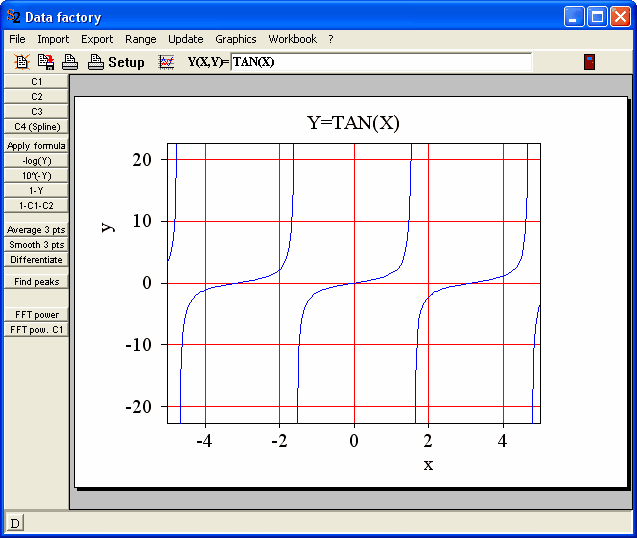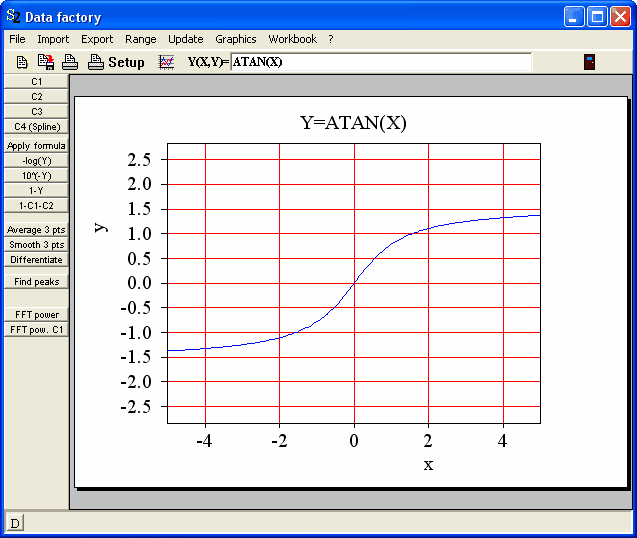New data are computed based on the user-defined formula Y(X,Y)= ... and the current Range of data.
The symbol Y refers to the current y-values. The formula Y(X,Y)=SQRT(Y), for example, replaces the current data by their square root.
You can also refer to the data of the three subwindows. The formula Y(X,Y)=sqrt(C1) replaces the data of the main window by the square root of the data in subwindow 'C1'.
In the formula editor you can use the following functions:
Function Explanation
abs(...) the absolute value of the argument

sin(...)
cos(...)
tan(...) trigonometric functions (argument in rad)
cot(...)

asin(...)
acos(...) inverse trigonometric functions
atan(...)

sinh(...)
cosh(...) hyperbolic functions
tanh(...)

exp(...) the exponential
ln(...) the natural logarithm
log(...) the logarithm with base 10
sqr(...) the square of the argument
sqrt(...) the square root of the argument
frac(...) returns the fractional part of the argument
int(...) returns the integer part of the argument
step(...) the step or 'heavyside' function

rect(...) the rect function

rnd(...) returns random numbers centered around 0 with amplitude
given by the argument, the values are equally distributed

gauss(...) returns gauss-distributed random numbers centered around 0.
The standard deviation of the distribution is given by the argument.

si(...) sin(...)/(...)

pi 3.14159
Expressions of the form number1^number2 are allowed and return the number2'th power of number1. Of course the usual operators +,-,*,/ and () can be used to combine expressions.